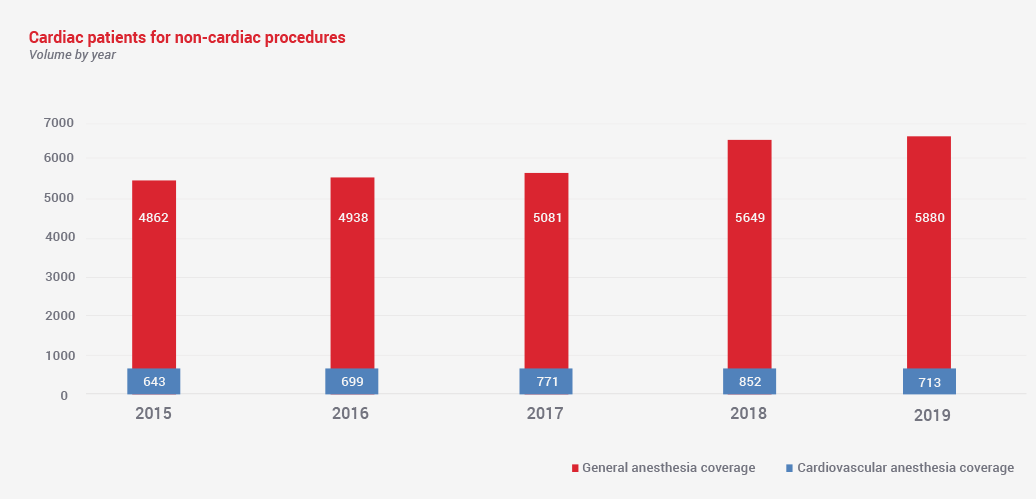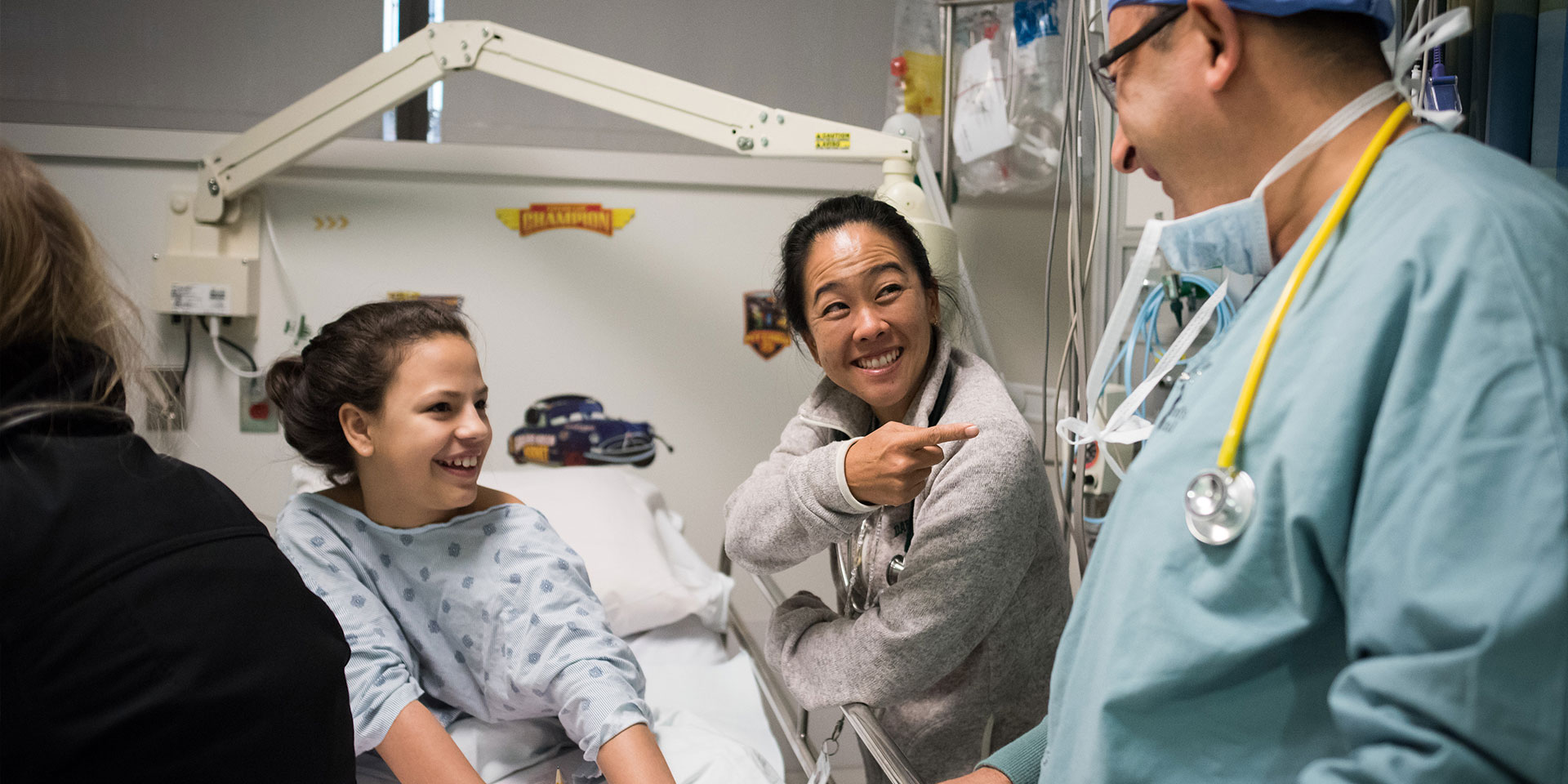The Cardiovascular Anesthesiology program at Texas Children’s Hospital provides sedation and anesthesia services for all congenital cardiac operations and for children with congenital heart disease undergoing various noncardiac procedures. Our team of more than 15 board-certified pediatric anesthesiologists and 10 nurse anesthetists also provides anesthesia services for catheterization and electrophysiology procedures, as well as imaging studies in MRI, CT and interventional radiology. The team, based in the new Lester and Sue Smith Legacy Tower, cares for patients in four state-of-the-art operating rooms and four catheterization laboratories, one with a dedicated MRI suite. We experienced a significant volume growth in all locations.

Non-cardiac procedures in patients with congenital heart disease
At Texas Children’s Hospital we have a robust practice program to review all patients with congenital heart disease (CHD) scheduled for non-cardiac procedures (NCP), including those scheduled for imaging studies. Our program uses a risk stratification approach to guide the decision of the most appropriate practitioner to take care of those patients, the setting in which care can be provided and the recovery plans. We have a team of general pediatric anesthesiologists who are trained and experienced in the care of patients with CHD who are scheduled for non-cardiac procedures. Our program identifies patients across the Texas Children’s system who require care provided by cardiac or general anesthesiologists, depending on the condition of the patient and the procedure planned.


Extubation Program
In collaboration with the Cardiac Intensive Care Unit and cardiac surgical team, our program has continued to refine and enhance our early extubation program. Our program has successfully extubated more patients in the operating room following procedures, with a lower re-intubation rate, than compared to the Society of Thoracic Surgeons (STS) National Database. This is done with innovative approaches and with consideration of patient age and severity score.


The “Flip Technique”
Using the carotid or axillary artery access to perform ductal stenting for establishing a stable source of pulmonary blood flow can enhance the feasibility and efficiency of the procedure especially in infants with significant ductal tortuosity. In collaboration with our interventional cardiologists, the cardiovascular anesthesiology team facilitates the use of a novel “flip technique” where the infant is rotated 180 degrees on the procedure table following induction of anesthesia and securing the airway. This technique has been used safely in our catheterization laboratory to shorten procedure time and increase success.



